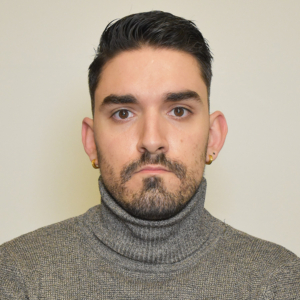Jonathan Peixoto | EDF
10th January 2022
Today, we had the pleasure to discuss the use of TraiNDE UT with Jonathan Peixoto, NDE Technician at EDF with four COFREND certifications in the CIFM sector (PT2/UT2/TOFD/VT2).

As an NDE expert, you are currently working for EDF at the Industrial Direction (DI). Could you tell us briefly what your daily work consists in?
I work in the CEDEN, which is an NDE Trials and Development Cell within EDF-DI (Industrial Direction). On a daily basis, our work involves integrating new techniques in our testing procedures, going from providing support to NDE project managers to training operators, as well as realizing tests and technology intelligence with our suppliers.
Training and certifications are essential to the quality and reliability of NDE. In this context, what are your thoughts about innovative tools like the TraiNDE UT and RT simulators?
We believe in investing in this type of tools, and going even further, in order to make access to a wide range of different control configurations easier (addition of new functionalities enabling to create your own exercise specimens, addition of a TOFD module, etc.).
EDF DI acquired five TraiNDE UT simulators a little over a year ago. In what context do you use TraiNDE UT?
We use TraiNDE UT internally in the frame of training our newcomers in the area of NDE. The tool allows for a fast familiarization with the technique thanks to its educational approach. Though simulators cannot replace training on real mockups entirely, they are a fine addition and a teaching help for training.
You probably have lots of real testing means (mockups, probes, UT equipment…) already available at EDF for training and skill maintenance… In your opinion, how can TraiNDE be beneficial and enhance this training?
TraiNDE enables access to a set of diverse exercises in a simpler way. Thanks to this innovative tool, our newcomers and interns can perform testing and train safely. They become quickly autonomous, without the need to manipulate our experimental test benches, which are cumbersome and heavy, while retaining a realistic aspect. This approach allows for an increase in the time trainees spend manipulating. Moreover, the functionality enabling to connect a UT device to the tool is very welcome. It enables us to increase the skill level of operators with equipment used in the field.
TraiNDE UT v1.3 has just been released, and we will deliver this version in the upcoming days. This update will enable users to create their own exercises (either from acquisitions or CIVA simulations). Moreover, it will be possible to modify the position of the flaws in some existing exercises, and thus to duplicate the exercise. What do you think of these improvements?
We have been expecting this functionality in order to go further in accompanying our newcomers in their initiation to UT.
What improvements would you like to see for TraiNDE, both in the short and long term?
Some optimization work on the sensitivity of the probe’s movement. When using mockup probes, we can observe jolts in the UT signals that are not representative of the real use of the probe. We hope for improvement in this area, in order to get even closer to real inspection. We use the tool for the training of operators who are not familiar with UT; with such difficulties affecting signal stability, we sometimes end up with signals that are harder to interpret than with the use of real UT.
